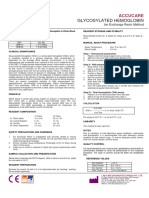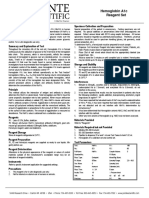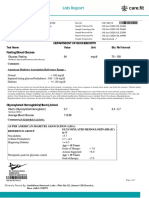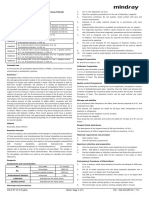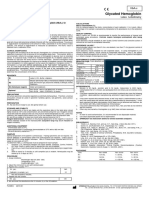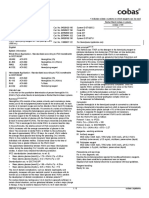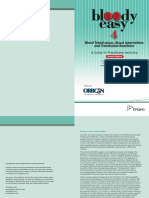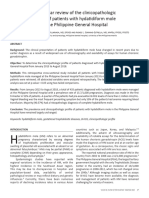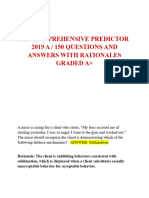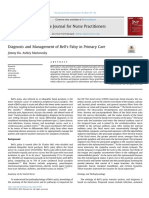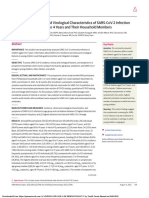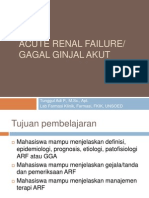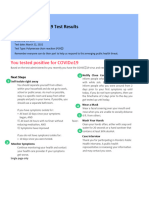0% found this document useful (0 votes)
129 views2 pagesThis document provides instructions for using a kit to quantify glycosylated hemoglobin (HbA1 or GHb) in human whole blood. GHb levels indicate average blood glucose over the previous 2-3 months and are useful for monitoring diabetes treatment efficacy. The method involves lysing red blood cells, separating GHb from non-glycosylated hemoglobin using ion exchange resin, and measuring absorbance of the GHb fraction to determine percentage levels. Expected GHb ranges are provided for different levels of diabetes control.
Uploaded by
Suresh BabuCopyright
© © All Rights Reserved
We take content rights seriously. If you suspect this is your content, claim it here.
Available Formats
Download as PDF, TXT or read online on Scribd
0% found this document useful (0 votes)
129 views2 pagesThis document provides instructions for using a kit to quantify glycosylated hemoglobin (HbA1 or GHb) in human whole blood. GHb levels indicate average blood glucose over the previous 2-3 months and are useful for monitoring diabetes treatment efficacy. The method involves lysing red blood cells, separating GHb from non-glycosylated hemoglobin using ion exchange resin, and measuring absorbance of the GHb fraction to determine percentage levels. Expected GHb ranges are provided for different levels of diabetes control.
Uploaded by
Suresh BabuCopyright
© © All Rights Reserved
We take content rights seriously. If you suspect this is your content, claim it here.
Available Formats
Download as PDF, TXT or read online on Scribd
/ 2
